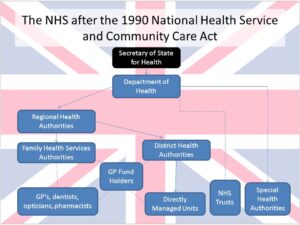Navigating the Road of Insurance Drivers: A Comprehensive Guide
Introduction
Insurance drivers are the critical factors that determine the cost, coverage, and terms of your insurance policy. Understanding these drivers is essential for making informed decisions when it comes to your insurance needs. In this comprehensive article, we will delve into the world of insurance drivers, exploring their impact, key considerations, and practical tips for finding the right insurance coverage.
Unraveling the World of Insurance Drivers
Insurance drivers are the forces that influence your insurance policy, affecting everything from premiums to coverage limits. They can be influenced by various factors, and understanding them is key to making the most of your insurance coverage.
Key Insurance Drivers
Insurance drivers are the factors that underlie the calculations and terms of your insurance policy. To understand your coverage and premiums, it’s crucial to be aware of the following key insurance drivers:
1. Risk Profile
Your risk profile is one of the most significant insurance drivers. It’s an evaluation of how much risk you represent to the insurance provider. Factors such as your age, occupation, lifestyle, and health history all play a role in determining your risk profile. For example, a young driver with a history of speeding tickets may be considered a higher risk for an auto insurance provider.
H2: How Your Risk Profile Affects Your Insurance
Your risk profile directly impacts your insurance costs. High-risk individuals typically pay higher premiums, while low-risk policyholders enjoy lower rates. Understanding your risk profile is essential for choosing appropriate coverage and managing your insurance costs.
2. Type of Insurance
The type of insurance you’re seeking is another crucial driver. Different insurance types, such as auto, health, home, or life insurance, come with their own set of drivers and considerations.
H2: Insurance Drivers by Type
Each type of insurance has its own unique set of drivers. For example, auto insurance drivers may include your driving history and the type of vehicle you own, while health insurance drivers encompass factors like your age, health status, and pre-existing conditions.
3. Coverage Limits
The coverage limits you select to play a significant role in determining your insurance costs. Coverage limits define the maximum amount the insurance provider will pay out in the event of a claim. Higher coverage limits typically result in higher premiums.
H2: Choosing Appropriate Coverage Limits
Selecting the right coverage limits is essential. Inadequate coverage can leave you financially vulnerable, while excessive coverage may lead to unnecessary costs. Evaluating your specific needs and risk factors is key to finding the appropriate balance.
4. Deductibles
Deductibles represent the amount you must pay out of pocket before your insurance coverage kicks in. A higher deductible generally leads to lower premiums, while a lower deductible results in higher premiums.
H2: The Impact of Deductibles on Insurance
Understanding the relationship between deductibles and premiums is vital for finding cost-effective insurance coverage. Consider your financial situation and risk tolerance when choosing a deductible.
5. Location
Your geographical location can also be a significant insurance driver. Different regions face unique risks, such as natural disasters or higher crime rates, which can affect insurance premiums.
H2: The Role of Location in Insurance
Understanding how your location impacts your insurance costs can help you make informed decisions. It’s essential to consider factors like the climate, local crime rates, and disaster risks when seeking insurance coverage.
6. Age and Life Stages
Your age and current life stage play a critical role in insurance drivers. Different ages and life stages come with unique insurance needs and considerations.
H2: Insurance Considerations by Age and Life Stage
Whether you’re a young adult seeking health insurance or a retiree looking for life insurance, your age and life stage will influence your insurance options and premiums. Being aware of these considerations can help you tailor your coverage to your specific circumstances.
Practical Tips for Managing Insurance Drivers
Managing insurance drivers effectively is key to obtaining the right coverage and keeping insurance costs in check. Here are some practical tips to help you navigate the world of insurance:
1. Compare Multiple Quotes
One of the most effective ways to manage insurance drivers is to shop around and obtain multiple insurance quotes. Different insurance providers may weigh drivers differently, resulting in varying premiums. By comparing quotes, you can find the most competitive rates that align with your risk profile and coverage needs.
2. Bundle Your Policies
Many insurance providers offer discounts to policyholders who bundle multiple insurance policies, such as auto and home insurance, with the same company. Bundling can lead to cost savings while providing comprehensive coverage across various aspects of your life.
3. Maintain a Good Risk Profile
Proactively managing your risk profile can lead to lower insurance premiums. For example, safe driving habits and a clean driving record can reduce auto insurance costs, while maintaining a healthy lifestyle may lead to more favorable health insurance terms.
4. Review and Adjust Your Coverage
Regularly reviewing your insurance coverage is essential. Life events, such as getting married, having children, or purchasing a new home, can change your insurance needs. Make adjustments as necessary to ensure you have adequate coverage without overpaying for unnecessary protection.
5. Consider Risk Mitigation Strategies
In some cases, you can mitigate risk factors that drive up insurance costs. For example, installing a security system in your home or taking preventive health measures can reduce insurance premiums.
Conclusion
Insurance drivers are the core factors that influence the terms and costs of your insurance policy. Understanding these drivers, from your risk profile to the type of coverage you need, is essential for making informed decisions about your insurance. By following practical tips for managing insurance drivers effectively, you can find the right insurance coverage that aligns with your needs and budget while providing the necessary protection for your life and assets.



